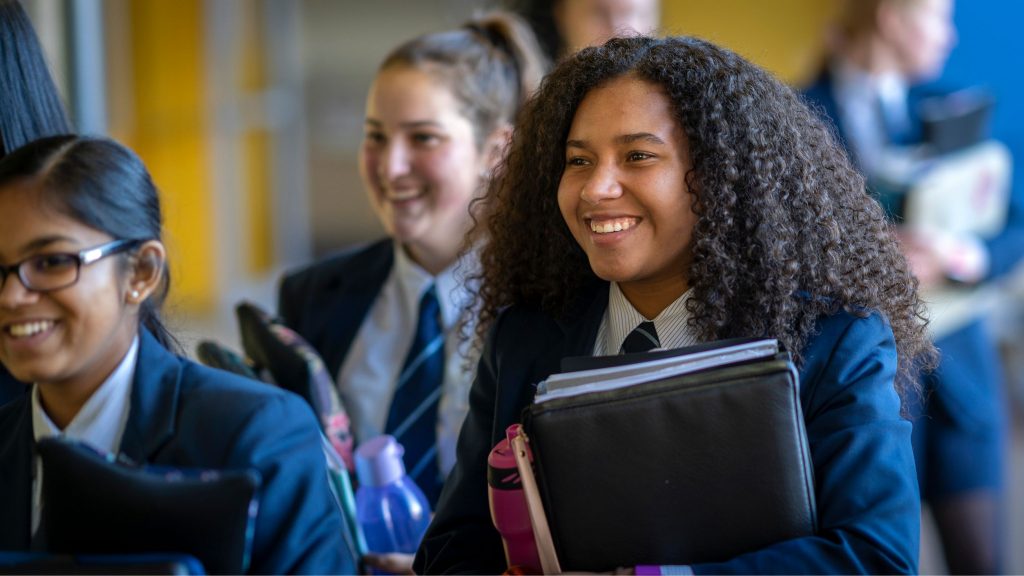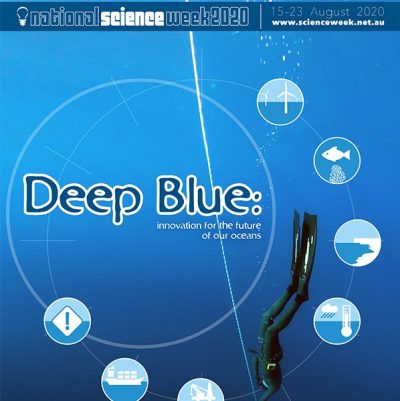

All across Australia National Science Week (NSW) will be celebrated from 15 – 23 August 2020. A range of SCIENCE ACTIVITIES will be held over the week at Marist to engage young minds in hands-on and on-line events. Among these activities will be a link-up with the 2020 Young Tassie Scientists for Senior College Physical Sciences students. Watch this space for NSW reports in our next issue of the Marist Star!
What better time to showcase the Science Inquiry projects of Senior College STEM Students? Below are short accounts of six of the Independent Investigations being undertaken by current STEM elective students for the Tasmanian Science Talent Search 2020. More will be profiled in the next Marist Star. STEM projects call for students to select a problem for which they want to find an answer. They then need to design and conduct an investigation to answer their questions and present their findings as a scientific report. We wish these students every success as they complete their work and represent the College in the state talent search.
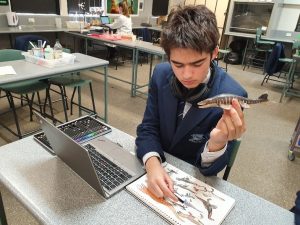 |
Riley has a strong interest in dinosaurs and has already completed and submitted his first Children’s Book to the 2020 Tasmanian Science Talent Search. This book explored the Cretaceous Era and the dynamics of a series of aquatic species. Riley has now embarked upon his second book which spans the upper Cretaceous period, 68 to 66 million years ago, and it will include the antics of, among others, Tyrannosaurus Rex! Riley moulds miniatures of dinosaur species and completes very exacting drawings to include alongside his storylines. He aims to inform and to teach young children about dinosaurs while they are enjoying reading his books. |
| How effective is UV light at killing bacteria? This is the question being investigated by Kasuni, Sabah and Raina. These young researchers have been using the bacterial strain, Lactobacillus paracasei Shirota found in Yacult probiotics to compare growth rates with and without exposure to UV light. The bacteria are grown on nutrient agar plates and incubated at body temperature. Some variables are exposed to UV light for varying timespans and the resulting impacts on bacterial growth are recorded and analysed. The results might provide some guidance on the usefulness of UV light, including sunlight exposure, to curbing bacterial growth. | 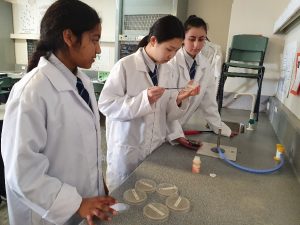 |
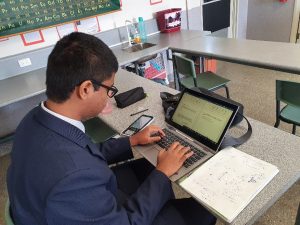 |
Can you measure how far away a particular star is? Yes, says Sasun! It is possible to find the distance to an object from the location it is observed, by observing the object from different locations respective to any points in the background of the object, the similar triangles created by these points and apparent “movement” of the object respective to any background objects or points, and then using simple trigonometry and parallax calculations to calculate the average distance to the object from your current location. When Sasun has finished we will know the exact distance to his target star! Every success, Sasun! |
| Students across Tasmania experienced varying degrees of success while learning at home due to COVID-19 restrictions and school closures. Amelie is very interested in seeing how well Senior College students adapted to on-line learning and how they feel they progressed during this time. She developed an anonymous survey for SC students and is conducting a statistical analysis of their responses to questions around the challenges and benefits of this form of learning. Amelie hopes that her findings will help guide further home-schooling needs, should schools be required to close again, in the future. | 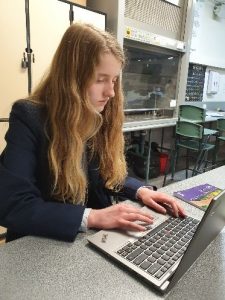 |
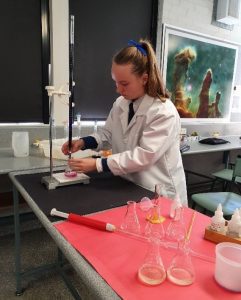 |
Heavy metal contamination in waterways, due to industrial accidents and mining run-off, can pose huge problems in providing clean drinking water for vulnerable populations across the world. This is the topic being explored by Tailah in her project. She prepared standard solutions of iron and is now investigating ways of removing the iron from the water. Her first experiments have involved absorption of the iron by calcium carbonate in eggshells. This method has proved successful since potassium permanganate titrations used for iron concentration estimation showed the resulting water to have much less iron than before the eggshell treatment. This project would provide valuable information for water treatment after toxic spills. |
| What impact does the enzyme lactase have on lactose levels in dairy products? This question is being explored by Lilly, who has a keen interest in the dietary limitations that are imposed on people who are lactose intolerant. Lilly has qualitatively measured the occurrence of lactose in a range of dairy products and investigated the capacity of lactase enzyme to convert it into more digestible sugars. This work’s findings could provide valuable information for those who are lactose intolerant, and the likely value of lactase medications. | 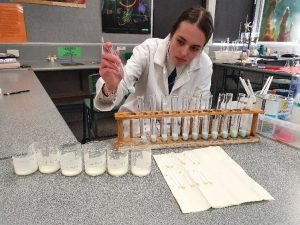 |
More STEM ELECTIVE projects will be presented in the next issue of the Marist Star. Also, the work of Junior STEM Club will be presented. Junior STEM Club takes place from 3–5pm in the McAuley Discovery Centre and club members are preparing projects for the 2020 Junior Division of the Tasmanian Science Talent Search.
Happy National Science Week!! 15 – 23 August 2020
Ann Burke
STEM Coordinator


